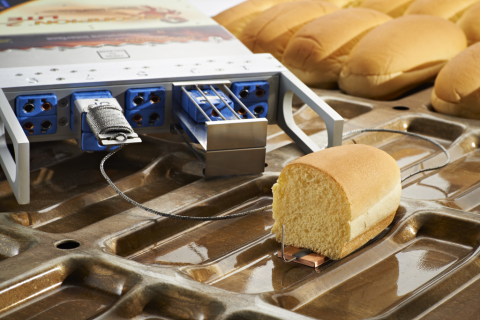No bakery wants to face the nightmare of a product recall. The financial cost, the damage to your brand’s reputation, and the stress it puts on your team can be overwhelming. Fortunately, there’s a powerful way to reduce your risk and protect your business: using reliable kill step validation profiling for industrial baking from Reading Thermal. When you can show validated kill step data, you put yourself in a much stronger position to avoid, or successfully defend against, a recall.
What Is Kill Step Data and Why Does It Matter?
A “kill step” is the part of your baking process that kills off harmful microorganisms such as Salmonella. In the commercial baking world, this typically means the baking phase where the internal product temperature rises to a level high enough, for a long enough time, to destroy pathogens. Documenting this process through thermal profiling is how you prove that your product is safe.
Why does this matter? Because if there’s ever a concern about contamination – either from a customer complaint, supplier issue, or regulatory inspection – you need evidence. Being able to pull up actual thermal data that shows your kill step was executed properly is a powerful defense. It shifts the narrative from “maybe something went wrong” to “here’s proof that it didn’t.”
How Reading Thermal Helps You Capture Accurate Kill Step Data
Reading Thermal’s SCORPION® 2 Profiling System is designed to help bakeries collect precise, product-level data from inside the oven. One of the key tools for kill step validation is the Temperature Sensor Array, which travels through the oven with your product to measure internal temperatures in real time.
This isn’t just about checking oven set points. It’s about capturing what’s really happening inside your product. With the SCORPION® Software, you can view and analyze these thermal profiles and compare them to validated kill step parameters. You’ll know exactly when your product reached the critical temperature threshold, how long it stayed there, and whether your process meets the standards set by food safety guidelines like those from FSMA (Food Safety Modernization Act).
By combining this sensor data with other inputs – such as time, humidity, and airflow – you get a complete picture of the kill step process. And that level of detail is exactly what regulators and auditors want to see.
Being Audit-Ready and Recall-Resilient
Kill step validation also prepares you to handle an audit or investigation with confidence. When you’re asked to provide documentation showing that your baking process is safe, you won’t be scrambling. Instead, you’ll have detailed profiles stored, organized, and ready to share.
If a recall situation ever arises, you can point to your records and demonstrate that your product passed through a properly validated kill step. This data could be the difference between a product being pulled from shelves or being cleared of suspicion altogether.
What’s more, consistent use of kill step data helps you fine-tune your baking process. It allows for early detection of deviations or mechanical issues that could affect food safety, giving you a chance to make corrections before a batch ever leaves the facility.
With Reading Thermal’s SCORPION® 2 Profiling System, you have the tools to capture and analyze the thermal data that proves your products are safe. It’s not just about compliance – it’s about peace of mind. When you can show your kill step process is working as intended, you gain the confidence to move forward, even in the face of unexpected challenges. Find out more about how our technology promotes accurate kill step validation profiling for industrial baking by using our online form or calling (01) 610-678-5890.

